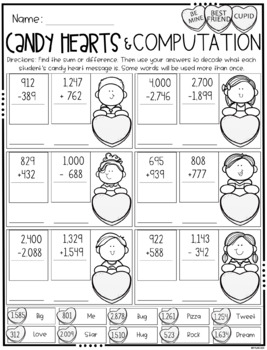3rd Grade Valentine's Day Packet | Valentine's Day Worksheets
- PDF
- Easel Activity
What educators are saying
Also included in
- These holiday math and reading worksheets are the perfect worksheets to share with your students around the holidays. These engaging, fun, and educational worksheets are perfect for homework, holiday take-home packets, morning work, center work and more. There is no prep involved for these packets.Price $20.25Original Price $22.50Save $2.25
Description
Looking for the perfect no prep Valentine's Day packet to use all month long? Do you need some Valentine's Day themed worksheets to brighten up your February activities? Look no further than this 3rd Grade Valentine's Day packet. This product includes over 36 pages of Valentine's Day themed worksheets. There are Valentine's Day math worksheet pages, reading worksheet pages, Valentine's Day themed writing pages, language arts worksheet pages, and a fun Valentine's Day themed STEM activity.
Check out the preview for additional information
Valentine's Day Math Includes:
Rounding to the nearest 10, 100, & 1,000
3 -Digit & 4- Digit Addition and Subtraction
Multiplication Facts
Division Facts
Word Problems: Addition, Subtraction, Multiplication, & Division
2 Digit by 1 Digit Multiplication
Addition, Subtraction, Multiplication, and Division Equations
Time to the Nearest Minute
Elapsed Time
Counting Money
Making Change to $5.00
Identifying Fractions
Identifying Fractions on a Number Line
Fractions of a Set
Equivalent Fractions
Bar Graph (Create)
Valentine's Day Reading & Language Arts Includes:
Nonfiction Valentine's Day Recipe - Sequencing & Answering Questions Focus
Fiction Valentine's Day Passage - Sequencing & Answering Questions Focus
Sequencing Mini Passages
Sequencing Book Report Page
Contractions
Homophones
Grammatical Errors
Vocabulary - Using Context Clues
2 Valentine's Day Writing Prompts
1 STEM Experiment (Creating Invisible Ink)
3 Just For Fun Valentine's Day Themed Worksheets
All VA SOL aligned
Want More Holiday Math & Reading Packets?







